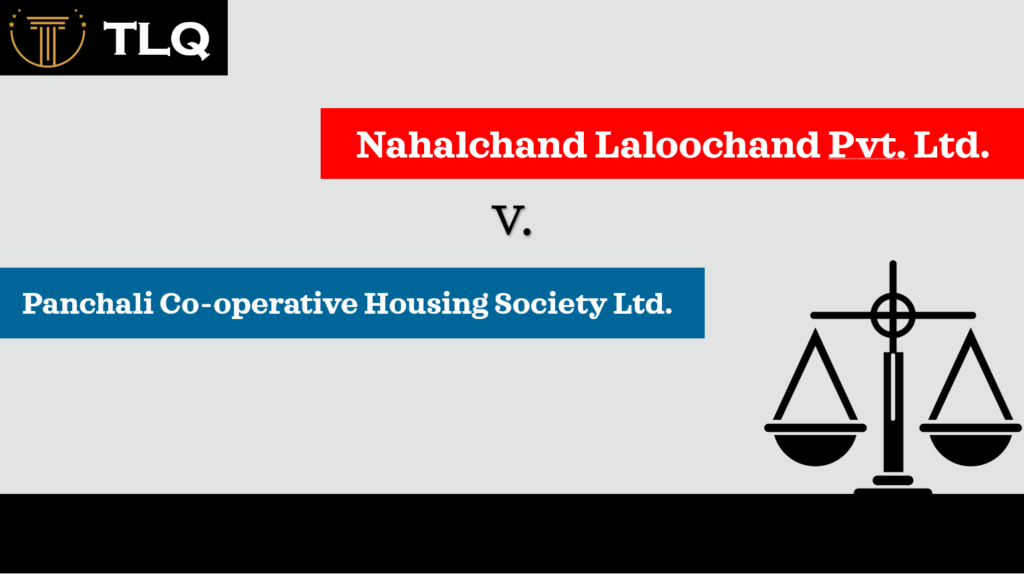Published On: 27th March, 2024
ABSTRACT
Non-Disclosure Agreements (NDAs) are critical in safeguarding sensitive information and preserving competitive advantages for businesses. However, enforcing NDAs presents various challenges, ranging from ambiguities in contractual terms to difficulties in identifying breaches and obtaining remedies. This article examines the complexities of NDA enforcement and offers strategies and best practices for overcoming these challenges. By delving into the legal framework, understanding common obstacles, and exploring proactive measures, businesses can enhance their ability to protect confidential information effectively. Through case studies and emerging trends, this discussion aims to provide practical insights into navigating the landscape of NDA enforcement in the contemporary business environment.
INTRODUCTION
Non-disclosure agreements (NDAs) are enforceable legal agreements that create a confidential connection between the parties who will access sensitive information and the parties who own it. This confidential relationship imposes a duty on both parties to refrain from disclosing the information. NDAs are also referred to as confidentiality agreements, confidentiality disclosure agreements, or non-disclosure contracts. They are commonly encountered at the outset of business relationships or significant financial transactions. For instance, an employer or client may request a new employee or contractor to sign a confidentiality agreement to safeguard the organization’s sensitive data. Unlike other business contracts such as service or sales agreements, which primarily outline terms and conditions of service or transactions, NDAs specifically address the privacy of an individual’s or organization’s information. Given that an NDA is a legally binding document, it holds great significance in preventing and resolving potential conflicts in the future. Any party found to violate the terms of the agreement would be legally obligated to compensate for damages incurred. The NDA delineates, in written form, what information falls under the category of ‘confidential’, thereby reducing ambiguity and the risk of information loss over time.
SCOPE OF NON-DISCLOSURE AGREEMENT
As a business owner seeking to hire employees, you’ll likely encounter various written agreements that establish the terms of employment relationships. Among these, Non-Disclosure Agreements (NDAs) and confidentiality agreements are commonly used, particularly in industries where competition is fierce. An NDA prohibits employees or independent contractors from disclosing proprietary knowledge acquired during their employment, even after they’ve left the job. On the other hand, confidentiality agreements specify that confidential information can only be disclosed for specific purposes. In California, employers heavily rely on NDAs and confidentiality agreements to protect sensitive information. While some also use non-compete agreements, California courts generally don’t enforce them against employees, except under limited circumstances. Crafting an effective NDA or confidentiality agreement involves striking a balance between inclusiveness and comprehensiveness. Confidential information typically encompasses trade secrets, undisclosed inventions, client lists, and business or financial plans. Defining the scope of “confidential information” is crucial, as overly broad definitions can render the agreement impractical and unenforceable, as seen in the case of Dowell vs. Biosense Webster, Inc. (2009) 179 Cal. App. 4th 564. Given these considerations, businesses must draft nondisclosure policies that align with their goals effectively. This entails taking reasonable steps to develop company guidelines and implementing sensible policies to safeguard trade secrets. Agreements should identify only the employment information deserving of protection and outline remedies for disclosure. Specific provisions should detail how information will be protected and specify approved uses.
COMMON CHALLENGES IN ENFORCING NON-DISCLOSURE AGREEMENT
There are multiple problems that the enforcement party has to go through while enforcing Non- Disclosure Agreement and they are as follows:-
- Lack of Explicit Terms and Definitions:-
The primary issue with NDAs arises from their lack of clear terms and definitions within the agreement. Vague language in NDAs can result in disputes due to misinterpretation of clauses, making it challenging for parties to grasp the contract’s true intent. Thus, it’s crucial to define confidential information clearly and transparently within the terms and definitions section of the NDA.
- Ambiguity in Confidentiality Obligations:-
Ambiguity in confidentiality obligations occurs when the terms of the NDA are unclear or subject to interpretation, making it challenging to ascertain the parties’ responsibilities for safeguarding confidential information. This lack of clarity can manifest in different parts of the NDA, such as defining the scope of confidential information, specifying exceptions to confidentiality, and determining the duration of confidentiality obligations. Such ambiguity often results in disagreements between parties regarding their rights and obligations under the agreement, posing a risk to the enforceability of the NDA.
- Breach Identification and Proof:-
Detecting breaches of an NDA can pose difficulties, particularly when the agreement lacks clear provisions for monitoring unauthorized disclosures of confidential information. Without effective mechanisms for identifying breaches, parties may find it challenging to establish that a breach has occurred and hold the responsible party liable. Moreover, proving a breach of confidentiality often demands substantial evidence, which can be hard to obtain, especially if the breach happened discreetly or if the confidential information was misused without leaving obvious traces.
- Jurisdictional Issues:-
NDAs often involve parties from diverse jurisdictions, each governed by its distinct set of laws and regulations overseeing contract enforcement and intellectual property rights. Jurisdictional matters can complicate NDA enforcement, especially when disputes arise over which jurisdiction’s laws govern the agreement or when parties disagree on the suitable forum for dispute resolution. Addressing jurisdictional issues may necessitate legal expertise and can lead to delays and additional costs for parties striving to uphold their rights under the NDA.
- Remedies and Damages:-
Enforcing NDAs often involves pursuing remedies and compensation for breaches of confidentiality. However, the options and adequacy of remedies and damages can differ based on the jurisdiction and the specific terms of the NDA. Determining the appropriate remedies and damages for an NDA breach can be intricate and may involve various factors, including the nature and severity of the breach, the harm suffered by the disclosing party, and the availability of equitable relief like injunctions. Calculating and quantifying damages, especially in cases involving financial losses or damage to reputation, can be quite complex and may require the expertise of legal and financial professionals.
STRATEGIES FOR STRENGTHENING NDA ENFORCEMENT
As we know there are multiple flaws in the enforcement of NDA which can create a lot of problems in the enforcement of NDA but there are some steps which can be used to strengthen the Enforcement of NDA. By implementing these strategies, organizations can strengthen their ability to enforce NDAs effectively, mitigate risks associated with confidential information disclosure, and protect their valuable assets from unauthorized use or exploitation.
- Clear and Comprehensive Contract Drafting:-
Precise and thorough contract drafting is vital to ensure that NDAs adequately safeguard confidential information and establish enforceable commitments. This entails clearly defining crucial terms and provisions, including the extent of confidential information, the responsibilities of the parties, exceptions to confidentiality, and the duration of the agreement. By using clear language and providing specific definitions, ambiguity is minimized, and the chances of disputes over interpretation are reduced.
- Education and Training on Confidentiality Obligations:-
Offering education and training to employees and stakeholders regarding the confidentiality obligations outlined in NDAs is crucial for fostering a culture of compliance and awareness. Training programs should encompass identifying confidential information, securely handling sensitive data, and comprehending the repercussions of NDA breaches. By heightening awareness and advocating for best practices in maintaining confidentiality, organizations can diminish the risk of inadvertent disclosures and strengthen NDA enforcement endeavours.
- Implementing Secure Information Management Systems:-
Deploying secure information management systems and protocols is crucial for protecting confidential information covered by NDAs. This entails implementing encryption technologies, access controls, and data loss prevention (DLP) solutions to prevent unauthorized access, disclosure, or misuse of sensitive data. By establishing strong information security measures, organizations can mitigate the risk of data breaches and unauthorized disclosures, thereby strengthening the enforceability of NDAs.
- Proactive Monitoring and Detection Mechanisms:-
Implementing proactive monitoring and detection mechanisms allows organizations to swiftly identify and address potential breaches of NDAs. This involves utilizing automated monitoring tools, conducting routine audits of information access and usage, and establishing incident response procedures to handle suspected breaches. By actively monitoring for unusual activity and setting up alert systems, organizations can detect and mitigate breaches before they cause substantial harm or loss.
- Pursuing Legal Action Strategically:-
Strategically pursuing legal action following NDA breaches necessitates a thorough assessment of several factors, such as the seriousness of the breach, the resulting damages, and the prospects of success in court. In order to evaluate the viability of prospective legal claims, investigate relevant remedies, and create a strategic plan for adhering to NDA responsibilities, organisations should work closely with legal experts.
This strategic legal approach might entail seeking injunctions to halt further disclosures, pursuing compensation for financial or reputational losses, or participating in alternative dispute resolution methods like mediation or arbitration.
CASE LAWS:
- Apple Inc. vs. Samsung Electronics Co., Ltd. (2012):-
In a notable instance of intellectual property conflict, Apple Inc. filed allegations against Samsung Electronics for patent infringement and breaching NDAs concerning confidential product details. Apple effectively upheld its NDAs by demonstrating Samsung’s unauthorized utilization of unique design features and technology in its smartphones and tablets. The legal proceedings culminated in a significant ruling favouring Apple, with Samsung mandated to pay substantial damages for both patent violation and breaching confidentiality commitments.
- Waymo LLC vs. Uber Technologies, Inc. (2018):-
Waymo, the self-driving car division of Alphabet Inc. (the parent company of Google), initiated legal action against Uber, asserting theft of trade secrets and breaches of NDAs by former Google engineer Anthony Levandowski. Waymo alleged that Levandowski unlawfully acquired confidential files related to autonomous vehicle technology before departing the company to establish his own startup, which Uber later acquired. During the trial, Uber and Waymo reached a settlement wherein Uber agreed to compensate Waymo with $245 million in equity and committed to refraining from using Waymo’s confidential information in its self-driving car technology.
- Balu Gopalkrishnan vs. State Of Kerala & Ors. (2020):-
The Kerala High Court issued an interim order mandating the implementation of protective measures to safeguard the confidentiality of data amassed on individuals vulnerable to COVID-19. The court responded to a series of petitions concerning a contract between the Government of Kerala and Sprinklr Inc., a U.S.-based software company, aimed at establishing an online platform for analyzing medical and health data related to COVID-19. The petitions contended that the contract lacked safeguards against unauthorized exploitation of health data collected by Sprinklr on behalf of the State of Kerala. Emphasizing the urgency amidst current circumstances, the court underscored the need to safeguard personal data to prevent a “data epidemic.” In response, the court directed the State to anonymize all sensitive personal data collected thus far regarding COVID-19 before transferring it to Sprinklr or any third-party service provider. Moreover, any future data collection must adhere to principles of informed consent, ensuring individuals are informed about third-party access to their data. The court further prohibited Sprinklr from engaging in any activity breaching data confidentiality and instructed the company to return all remaining COVID-19-related data to the State government.
- Homag India Private Ltd vs. Mr Ulfath Ali Khan,(2012):-
The plaintiff, an Indian subsidiary of the international MNC Homaga group, specializes in providing machines, cells, and factory installations for various industries including panel processing furniture, structural elements, and timber frame house construction. The defendant, employed as a Senior Service Engineer with the plaintiff’s company, received two promotions in 2009. During his tenure, he had access to confidential business information. Upon resigning on March 25, 2009, citing a better job opportunity with the second defendant, the defendant was found to have sent numerous emails containing sensitive data from his official email address to the second defendant. This included customer details, updated commissioned reports, pending offers, and technical information about the plaintiff’s products, which the defendant admitted to in an affidavit. The court found that the first defendant and the second defendant conspired to create a competing private limited business in India.
The second defendant intended to appoint the first defendant as the Director of Sales and Services for its Indian entity. Until the new company was set up, the first defendant agreed to work as an employee of the second defendant. In light of these findings, the court granted an injunction to prevent the use of the plaintiff’s data, recognizing the collaborative efforts between the defendants and their intent to create a competing entity using confidential information obtained during the first defendant’s employment with the plaintiff.
- Mr ‘X’ vs. Hospital ‘Z’ AIR 1995 SC 495:-
The plaintiff was diagnosed as HIV positive after undergoing several tests at various hospitals. Following the disclosure of the plaintiff’s HIV-positive status by the hospital’s doctors to the plaintiff’s fiancée, the marriage arrangement was cancelled. The plaintiff sought damages from the hospital, alleging that the disclosure of confidential medical information was illegal and led to the termination of the marriage. The Supreme Court ruled that the disclosure of the plaintiff’s HIV-positive status served to protect the woman from potential harm by providing vital information about the plaintiff’s health condition. In cases where two fundamental rights clash—namely, the plaintiff’s right to privacy and the fiancée’s right to maintain a healthy life—the court is tasked with upholding the right that advances public morality or public interest. The Supreme Court’s ruling established that disclosing the plaintiff’s HIV-positive status did not violate confidentiality rules or the plaintiff’s right to privacy. Instead, it prioritized the fiancée’s right to lead a healthy life and promoted public interest and morality.
CONCLUSION:
In conclusion, it is evident that enforcing Non-Disclosure Agreements (NDAs) poses a range of challenges that demand proactive strategies and best practices for effective resolution. Businesses must address ambiguity in contractual terms, navigate jurisdictional complexities, and identify breaches with comprehensive approaches.
To enforce NDAs successfully, organizations should focus on clear and thorough contract drafting, offer education and training on confidentiality obligations, implement secure information management systems, establish proactive monitoring mechanisms, and strategically pursue legal action when necessary. By staying vigilant, adaptable, and informed about evolving legal and technological landscapes, businesses can navigate the complexities of NDA enforcement.
By prioritizing the protection of confidential information and adopting proactive measures, organizations can mitigate risks, safeguard competitive advantages, and uphold trust and integrity in their business relationships. Businesses must remain proactive in safeguarding confidential information, thereby preserving their competitive edge and fostering strong partnerships.
BIBLIOGRAPHY:
- Non-Disclosure Agreement by Kelsey McKnight
- The Startup Guide to Non-Disclosure Agreement by Tennille Christensen
- https://globalfreedomofexpression.columbia.edu/
- https://blog.ipleaders.in/case-laws-breach-of-confidentiality/
- https://blog.ipleaders.in/all-about-a-non-disclosure-agreement/#:~:text=A%20non%2Ddisclosure%20agreement%20is,another%20name%20for%20an%20NDA




